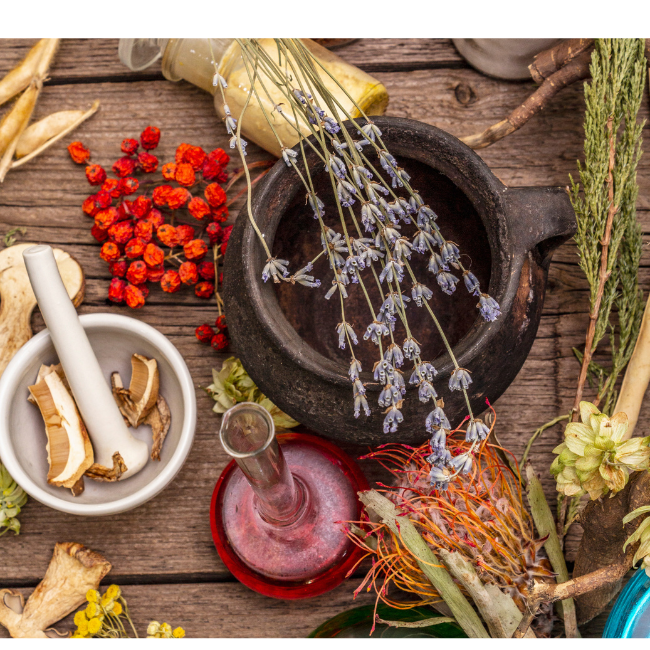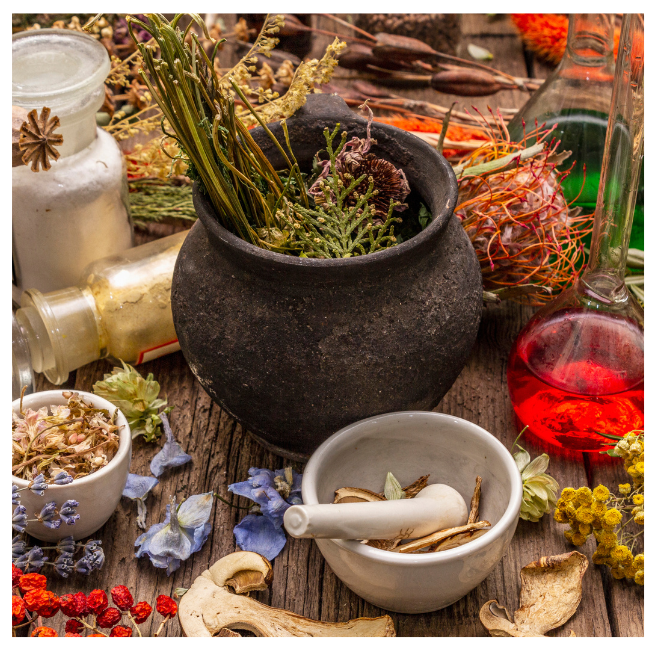The 10 Most Overlooked Chinese Herbs That Could Dramatically Improve Your Wellness — And Why No One Is Talking About Them
Posted by Sarah Johnson, M.S. in Holistic Healing on Nov 12th 2025
The 10 Most Overlooked Chinese Herbs That Could Dramatically Improve Your Wellness — And Why No One Is Talking About Them
By 1st Chinese Herbs — Trusted, Lab-Tested Herbs Since 1994
The 10 Most Overlooked Chinese Herbs (Uses, Benefits, How to Choose & Beginner Guide)

Discover 10 underrated Chinese herbs that support wellness in powerful, traditional ways. Learn why they’re overlooked, how to use them, and which form to choose.
What Are the Most Overlooked Chinese Herbs?
The most overlooked Chinese herbs include Bai Zhu, Niu Bang Zi, Yu Zhu, Qian Hu, Mu Li, Shan Zha, Yi Yi Ren, Hou Po, Huang Qin, and Du Zhong. These herbs have been used in Traditional Chinese Medicine to support digestion, lungs, energy, fluids, circulation, joint strength, and emotional grounding — yet rarely appear in mainstream wellness discussions.
⭐ QUICK SUMMARY OF HERBS
- These herbs are gentle, powerful, and traditionally respected.
- Most people never hear about them because they hide inside formulas.
- They support foundational areas of wellness like digestion, fluid balance, qi, yin, respiratory clarity, and joints.
- This article shows what they do, why they’re overlooked, how to use them, and which form works best.
The “Quiet” Herbs No One Googles — But Every Herbalist Uses
Everyone knows ginseng, astragalus, and goji berries.
But ask ANY Traditional Chinese Medicine practitioner and they’ll tell you:
? Some of the most valuable herbs are the ones you’ve never heard of.
These herbs don’t go viral.
They don’t land on Instagram reels.
They aren’t included in “Top 10 Herbs for…” TikTok lists.
Instead, they’ve been quietly used for hundreds of years to support:
-
healthy digestion
-
steady energy
-
clear breathing
-
flexible joints
-
balanced fluids
-
calm emotions
-
strong structure
This guide uncovers 10 overlooked Chinese herbs, showing:
✔ what they traditionally do
✔ why they’re ignored
✔ how to use them
✔ which form to choose
✔ the beginner’s decision guide
✔ common mistakes people make
✔ related herbs you should know
1. Bai Zhu (Atractylodes Macrocephala)
⭐ Traditional Roles
-
Supports digestion
-
Encourages healthy fluid balance
-
Strengthens spleen qi
-
Promotes gentle, natural energy
⭐ Why It’s Overlooked
It’s hidden inside formulas (Si Jun Zi Tang, Yu Ping Feng San) so beginners rarely learn the name.
⭐ Best Form
✔ Cut herb (tea)
✔ Powder
✔ Extract
2. Niu Bang Zi (Burdock Seed)
⭐ Traditional Roles
-
Supports throat comfort
-
Encourages healthy detoxification pathways
-
Promotes clear skin
⭐ Why It’s Overlooked
Western herbalism only promotes Burdock root. The seed is a TCM essential yet nearly unknown.
3. Yu Zhu (Solomon’s Seal Root)
⭐ Traditional Roles
-
Nourishes yin
-
Supports lung moisture and comfort
-
Encourages flexible joints and tendons
⭐ Why It’s Overlooked
It works gently and gradually — not the type of herb that becomes a “trend.”
4. Qian Hu (Peucedanum Root)
⭐ Traditional Roles
-
Clears the lungs
-
Encourages smooth airflow
-
Helps maintain healthy phlegm balance
⭐ Why It’s Overlooked
A practitioner favorite but rarely discussed outside TCM schools.
5. Mu Li (Oyster Shell)
⭐ Traditional Roles
-
Grounds the spirit
-
Anchors rising yang
-
Supports emotional steadiness
⭐ Why It’s Overlooked
Mineral herbs rarely go mainstream — but they’re deeply valued in classical Chinese medicine.
6. Shan Zha (Hawthorn Berry)
⭐ Traditional Roles
-
Supports digestion of rich foods
-
Encourages healthy circulation
-
Gently supports metabolic wellness
⭐ Why It’s Overlooked
Most believe it’s ONLY for the heart — missing half its traditional usage.
7. Yi Yi Ren (Coix Seed / Job’s Tears)
⭐ Traditional Roles
-
Encourages joint comfort
-
Promotes fluid movement
-
Supports clear complexion
⭐ Why It’s Overlooked
It looks like a grain — but acts like a powerful, gentle herb.
8. Hou Po (Magnolia Bark)
⭐ Traditional Roles
-
Supports healthy digestive movement
-
Reduces bloating
-
Moves qi
⭐ Why It’s Overlooked
Magnolia flowers are popular; the bark remains unknown outside practitioner circles.
9. Huang Qin (Scutellaria / Chinese Skullcap Root)
⭐ Traditional Roles
-
Clears heat
-
Supports liver balance
-
Encourages healthy inflammatory response
-
Supports respiratory comfort
⭐ Why It’s Overlooked
Confusion with Western Skullcap causes major consumer misunderstanding.
10. Du Zhong (Eucommia Bark)
⭐ Traditional Roles
-
Supports bones
-
Encourages healthy lower back
-
Promotes joint flexibility
-
Strengthens kidney & liver systems
⭐ Why It’s Overlooked
It never became trendy due to taste — even though it is one of TCM’s top structural herbs.
 WHY ARE THESE HERBS OVERLOOKED IF THEY ARE SO GREAT?
WHY ARE THESE HERBS OVERLOOKED IF THEY ARE SO GREAT?
✔ They’re not “influencer herbs”
✔ Their names are difficult to pronounce
✔ They’re inside formulas, not sold as standalones
✔ Western herbal texts lack coverage
✔ Their benefits are gradual, not dramatic
✔ Buyers simply don’t know they exist
⭐ BEGINNER DECISION GUIDE
Which Overlooked Herb Should You Start With?
| Goal | Recommended Herb | Why |
|---|---|---|
| Better digestion | Bai Zhu / Shan Zha | Gentle, foundational support |
| Lung clarity | Qian Hu | Traditional lung herb |
| More energy | Bai Zhu | Strengthens spleen qi |
| Yin nourishment | Yu Zhu | Moistening, gentle |
| Emotional grounding | Mu Li | Anchors and calms |
| Joint & tendon comfort | Du Zhong / Yi Yi Ren | Classical pairing |
| Better circulation | Shan Zha | Supports movement of blood |
HERBAL FORM COMPARISON TABLE

| Form | Best For | Pros | Cons |
|---|---|---|---|
| Cut Herb | Traditional tea users | Strongest, most classical | Requires simmering |
| Powder | Everyday use | Quick, easy | May taste strong |
| Extract | Fast support | Potent | Higher price |
| Teapill | Beginners | Easiest, no prep | Least concentrated |
⭐ COMMON MISTAKES PEOPLE MAKE WITH CHINESE HERBS
❌ Taking herbs only once
Herbs work when used consistently.
❌ Using the wrong form
Example: decoction may be too strong; extract too potent; teapill easiest.
❌ Buying low-quality herbs
Always choose lab-tested, sulfur-free herbs.
❌ Expecting overnight results
TCM herbs work gradually and holistically.
⭐ WHY THESE HERBS WORK: SIMPLE TCM THEORY
-
Qi = your body’s daily energy
-
Blood = nourishment
-
Yin = cooling fluids and lubrication
-
Yang = metabolic warmth
-
Damp = heaviness, swelling, mucus
-
Heat = inflammation signs
These overlooked herbs often support the “foundation layers” — digestion, fluids, structural strength — which is why practitioners value them.
⭐ CUSTOMER TESTIMONIALS
“I never heard of Du Zhong before, but it helped me understand what ‘TCM joint support’ feels like.”
— M.R.
“Your lab-tested quality is why I trust your herbs over anywhere else.”
— S.J.
“Shan Zha was the missing piece of my digestion routine.”
— D.T.
Are You A 1st Time Customer?
Use coupon code TryUs20 for 20% off your first order.
⭐ FAQ SECTION
Are these herbs safe for beginners?
TCM herbs have a long history of traditional use. Always follow label directions.
How long should I take these herbs?
Herbs traditionally work gradually, over days or weeks.
Are powders stronger than teapills?
Powders and extracts are more concentrated; teapills are easiest for beginners.
Can I mix these herbs?
Yes—TCM blends are very common. Follow classical combinations or practitioner guidance.
Where can I buy high-quality Chinese herbs?
1st Chinese Herbs provides lab-tested, premium herbs trusted since 1994.
7 Common Chinese Herbal Mistakes
Ready to Explore These Hidden Herbal Gems?
Use coupon code TryUs20
Get 20% off your first order
Explore cut herbs, powders, extracts, and teapills
Trusted. Lab Tested. Sulfur Free. Since 1994.
References:


